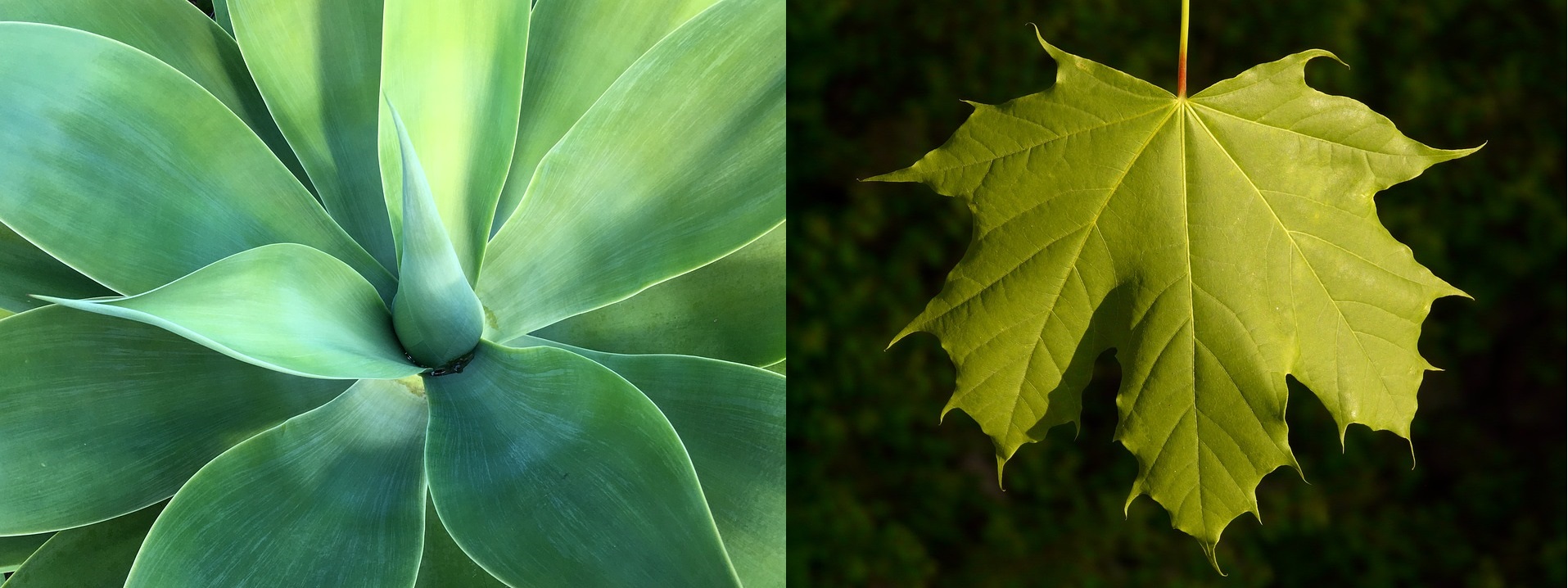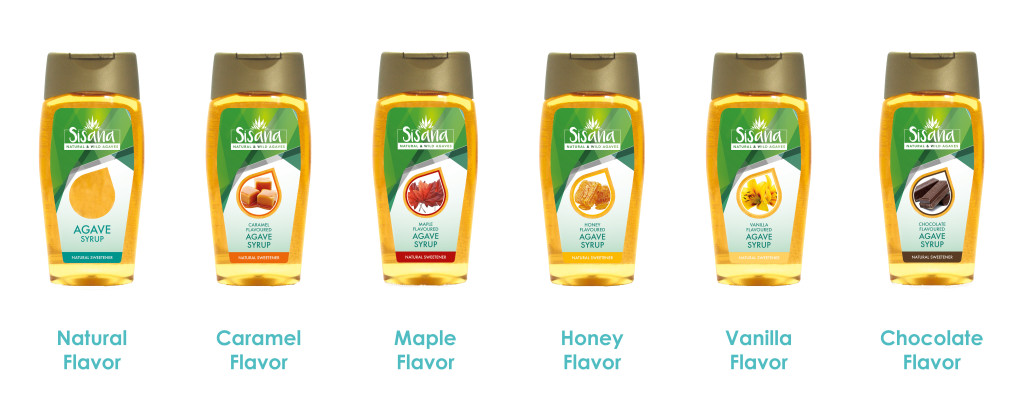Maple Syrup vs Agave: The Complete Guide

Maple Syrup vs Agave: Short Introduction
If you’re reading this, you’re one of many facing the maple syrup vs agave dilemma. They’re both healthier alternatives to sugar. Agave syrup (also known as agave nectar) is becoming a very popular natural sweetener. You’ve probably tried it in sweetened products or seen it on the shelf in the grocery store. Agave usually comes from the blue agave plant, which is also used to make tequila and grows in the southwestern part of the US and the northern regions of South America. Agave is almost twice as sweet as sugar, which means you need to use less of it compared to sugar. It is processed before use, like maple syrup, which is boiled before consumption.
Maple syrup comes from the sugary sap of maple trees and has been known in America since the Indians. Around four-fifths of the world’s supply of maple syrup is produced in Canada. It is made by drilling a hole into the maple tree and collecting the sap that leaks out, after which it is boiled for the water to evaporate and leave the sweet syrup. This is then filtered to make sure it is completely pure.
Agave syrup is also processed to remove the excess water. Being thinner than maple syrup, agave is a great choice for use in liquids for sweetening.
Agave vs Maple Syrup: Health
Comparison Table
So which is the healthier choice? Here is a brief comparison table of the agave vs maple syrup nutritional facts per 100 grams of each product. These agave maple syrup nutrition facts should be helpful in deciding which sweetener works best for you.
| Nutrition Facts (per 100 g) | Agave | Maple syrup |
|---|---|---|
| Source | Nectar from the blue agave plant | Xylem sap of sugar maple, red maple, black maple trees or other maple species |
| Types of included sugars | Fructose (55%-90%) and glucose | 100% sucrose (same as in table sugar) |
| Glycemic index | okt-19 | 54 |
| Sugars | 1 g (per 100 g) | 67 g |
| Fat | 0 g | 0.06 g |
| Protein | 0 g (per 100 g) | 0.04 g |
| Calcium | 72 mg (12%) | 102 mg (10%) |
| Iron | 0.42 mg (3%) | 0.11 mg (1%) |
| Vitamin C | 1 mg (2%) | 0 mg |
| Sodium | 4 mg (0%) | 12 mg (1%) |
| Dietary fiber | 2 g (per 100 g) | 0 g |
| Carbohydrates | 5 g (per 100 g) | 67 g |
| Calories | 310 (100 g) | 260 |
| Health benefits | Lower glycemic index | Less fructose |
| Health disadvantages | Contains high percentage of fructose | Contains a great deal more carbohydrates, which are likely to be stored as fat. |
Glycemic Index (GI)
Before looking into the glycemic index of maple syrup vs. agave, we’re faced with the question of what the glycemic index actually is. The answer: the glycemic index or GI is a measurement of the impact of carbohydrates on our blood sugar. GI looks at the actual impact on our blood sugar. It is also important to look at Glycemic Load (GL), which measures the GI per carbohydrates in serving size (different foods have a higher or lower percentage of carbohydrates relative to their serving size). More information on Glycemic Index and Load can be found here. Maple syrup has a medium-low glycemic index (54) and glycemic load. On the other hand, Agave’s glycemic index is the range of 10 – 19, which is low. Moreover, Agave’s glycemic load is much lower than Maple syrup’s too. For a full view of how these sweeteners compare in terms of GI and GL, see our sweetener comparison chart.
Calories
When it comes to the number of calories in the agave nectar vs maple syrup debate, agave slightly loses out, as you can see in the table above. Agave has 310 calories per 100g while Maple syrup has 260 per 100g.
Fructose
There is also a difference in the amount of fructose. Agave nectar’s fructose content is roughly 55-90%, where maple syrup is made almost completely from glucose. However, there is slightly too much emphasis put on the fact that Agave nectar has fructose. Many sweeteners, including honey, have high fructose content, but it does not necessarily make them unhealthy. Fructose is a very common sugar for your body to absorb, and as long as it is not taken in excess, there is no problem with it.
Agave vs Maple Syrup: Taste
The strong flavor and relatively metallic taste of maple syrup don’t always make it the best ingredient to use in certain dishes, delicious as it may otherwise be. In terms of agave syrup / maple flavor there is certainly something to be said for the former.
What do you need to know about agave vs maple syrup in terms of taste? Agave tastes a bit like honey, although with a slightly more neutral taste. If you don’t like the taste of honey, you may find agave’s neutral taste more appealing. As agave is an all-natural sweetener with absolutely no additives or preservatives, it does not have a bitter aftertaste. There are many varieties of agave nectar, which use different preparation methods and plant varieties, but there are two main types – dark and light. The darker kind undergo more heating and are filtered less than the lighter kind. The dark agave nectar is stronger and with a more intense taste due to the solids left in the syrup after the moderate filtering. On the other hand, the lighter syrups have a milder flavor, making them more suitable for cooking. They undergo less heating and are filtered more thoroughly. The flavor of dark agave nectar is sometimes compared to that of maple syrup, but they are not identical; agave is more intense, and if you have decided to substitute agave for maple syrup, you’d need to use less. This should give you some food for thought as you try to solve your agave nectar vs maple syrup dilemma.
Maple Syrup vs Agave In Baking
Both maple syrup and agave can and do substitute for sugar in baking. Agave nectar is used as a substitute for part or all of the sweeteners or sugars in many recipes. Agave is a great ingredient when it comes to sauces, drinks, salad dressings and a wide variety of desserts – a full list of uses can be found here. Keep in mind that when substituting white sugar in recipes for baked goods, maple syrup and agave can be quite sensitive to changes in the moisture of various products. Replace only half the sugar with agave if replacing all of it did not work out as well as you thought it would.
Agave syrup makes baked items brown faster, so it’s suggested to bake them longer and at a lower temperature than you would if you were using sugar. Increase baking time and reduce the oven temperature by about 4 degrees Celsius (25°F). For more on substituting Agave for other sugars, see this article.
Agave vs Maple Syrup: Price
A very significant aspect in this debate is the price. It takes approximately 150 liters of raw maple sap to produce about 3.5 liters of finished, ready-to-eat syrup. Agave syrup is twice as cheap as maple syrup, making it the more economically feasible option for regular use.
Agave Maple Syrup Conversion
If substituting maple syrup with agave or vice versa, the exact same amounts are to be used – for example, if you use a cup of agave for a dish, you need to replace it with a cup of maple syrup. When substituting white or brown sugar with agave, you would need to use two-thirds of a cup of agave for each cup of sugar and reduce other liquids by a quarter to a third of a cup. Sucanat and evaporated cane juice can also be substituted this way.
The same quantities are to be used when substituting sugar with maple syrup – two-thirds of a cup of maple syrup for each cup of sugar.
Agave Syrup vs Maple Syrup: Conclusion
So, which is more beneficial? In sum: maple is not as sweet, has fewer calories but higher GI, and doesn’t work well with certain dishes. Agave is a better choice for cooking, but it can be very sweet and contains fructose, which is more likely to be stored as fat than the sucrose maple contains. Agave is moreover beneficial from a financial standpoint. Hopefully you’ll find it easier to resolve your agave syrup vs maple syrup dilemma after reading this!


Thank you for the effort, keep up the good work Great work.
EXCEPTIONAL Post.thanks for share..more delay.